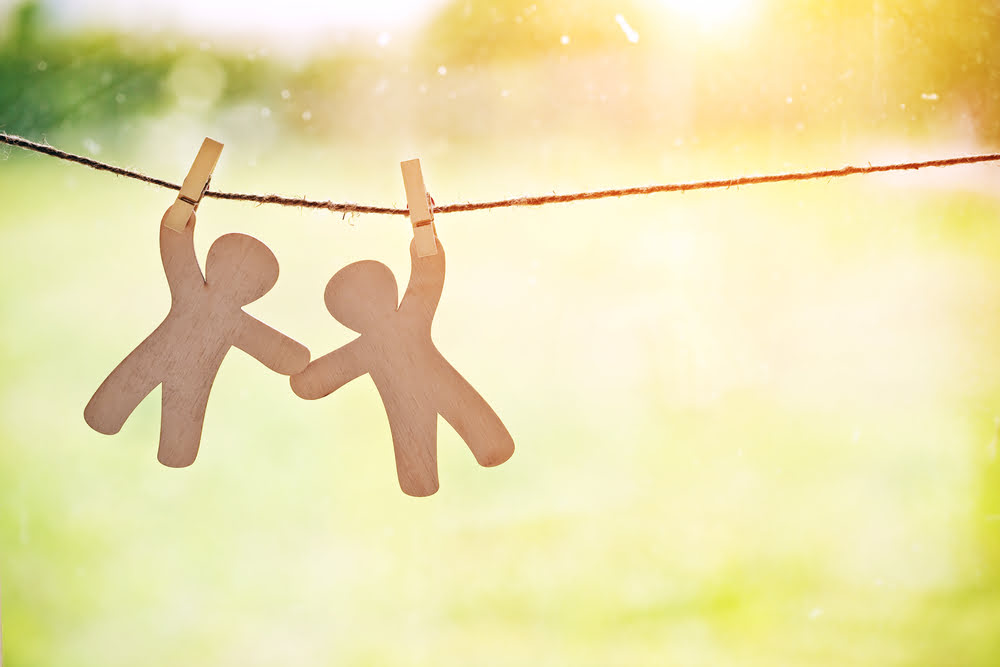As a social species, humans expect other humans to support them, especially in difficult times. When two people go through the same traumatic experience, as difficult as times can get, they typically have no one but each to support them. When we’re supported and reciprocally support during a hardship, our distress gets reduced1Olff, M. (2012). Bonding after trauma: On the role of social support and the oxytocin system in traumatic stress. European Journal of Psychotraumatology, 3(1), 18597. and we form a strong bond with our supporter.
This bonding over a shared traumatic experience is not the same as bonding over the same trauma that occurs separately to two people. For instance, when two people who are not siblings each had an abusive parent. They’re still likely to form a bond because they understand what each has been through, but it is unlikely to be as strong as bonding over shared trauma.
The definition
I define shared trauma as trauma that is experienced by two people together. Of course, more than two people can also experience the same trauma together. Examples of this collective trauma2Hutto, A., Raynor, P., & Baliko, B. (2024). Shared Trauma: An evolutionary model concept analysis in light of COVID‐19. International Journal of Mental Health Nursing. include:
- Wars
- Pandemics
- Natural disasters
Bonding over shared trauma is also not the same as vicarious or secondary trauma. This type of trauma is typically experienced in a therapeutic setting where the therapist is emotionally affected by hearing the trauma narrative of their client.3Tosone, C., & Bloomberg, S. (2022). Shared trauma: An essential construct for challenging times. In Shared mass trauma in social work (pp. 3-18). Routledge.
Shared trauma vs trauma bonding
A trauma bond is an entirely different concept than bonding over shared trauma. A trauma bond gets formed between the abused and the abuser due to the cycle of abuse. The intermittent reinforcement created by abusing the victim and then handing out breadcrumbs of decent or kind behavior makes the victim trauma bonded to the abuser.
Related: Signs of trauma bonding
Is it good or bad?
As mentioned previously, bonding over a shared traumatic experience tends to create a stronger bond than bonds that form naturally. This is because a person who shares your traumatic experience understands you like no one else can. This feeling of being understood, plus mutual support during the trauma, lays a strong foundation of trust for the relationship.
Even though such bonds can be strong and last a lifetime, there are important caveats to keep in mind:
1. Overfocusing on positive traits
A realistic view of people is that they possess a mixture of positive and negative traits. If you’ve been supported during trauma by someone, you’re likely to focus too much on their positive characteristics. You’re likely to forget the negative things they might have done in the past or might do in the future.
When you’re in a vulnerable position, you latch on to any support you can find. You remember who helped you and forget everything else. This leads to a biased assessment of the person who supported you. Had you not been through a difficult time with this person, would you still bond with them based on their personality traits?
2. Codependency and enmeshment
Since trauma shapes identity, if you’ve shared a traumatic experience with someone, you two are likely to be exact copies of each other, personality-wise. You have the same thoughts, attitudes, and worldviews. You see the world through the same perceptual filters. Any perceptual filtering takes away from seeing reality how it truly is.
For example, if a father abandons his kids when they are young, they might grow up distrusting men and seeing them negatively. They might keep harping on about toxic masculinity while ignoring the positive side of masculinity. Shared trauma has filtered their perception of reality. They’re too reliant on each other for their sense of self and worldviews. They don’t know who they would be without each other.
3. Re-traumatization
People may not cope with shared trauma in the same way. They have differences in temperament, mental strength, pain tolerance, and resilience. Not all experience post-traumatic growth. Even those who do may not do so at the same rate.
If you heal after trauma, your trauma partner may still be stuck. They might find it challenging or even unnecessary to grow. They might forever cast themselves into the victim role and keep feeling bad over what happened. If you interact with them, they can re-traumatize you and impede your progress.4Boasso, A., Overstreet, S., & Ruscher, J. B. (2015). Community disasters and shared trauma: Implications of listening to co-survivor narratives. Journal of Loss and Trauma, 20(5), 397-409.

